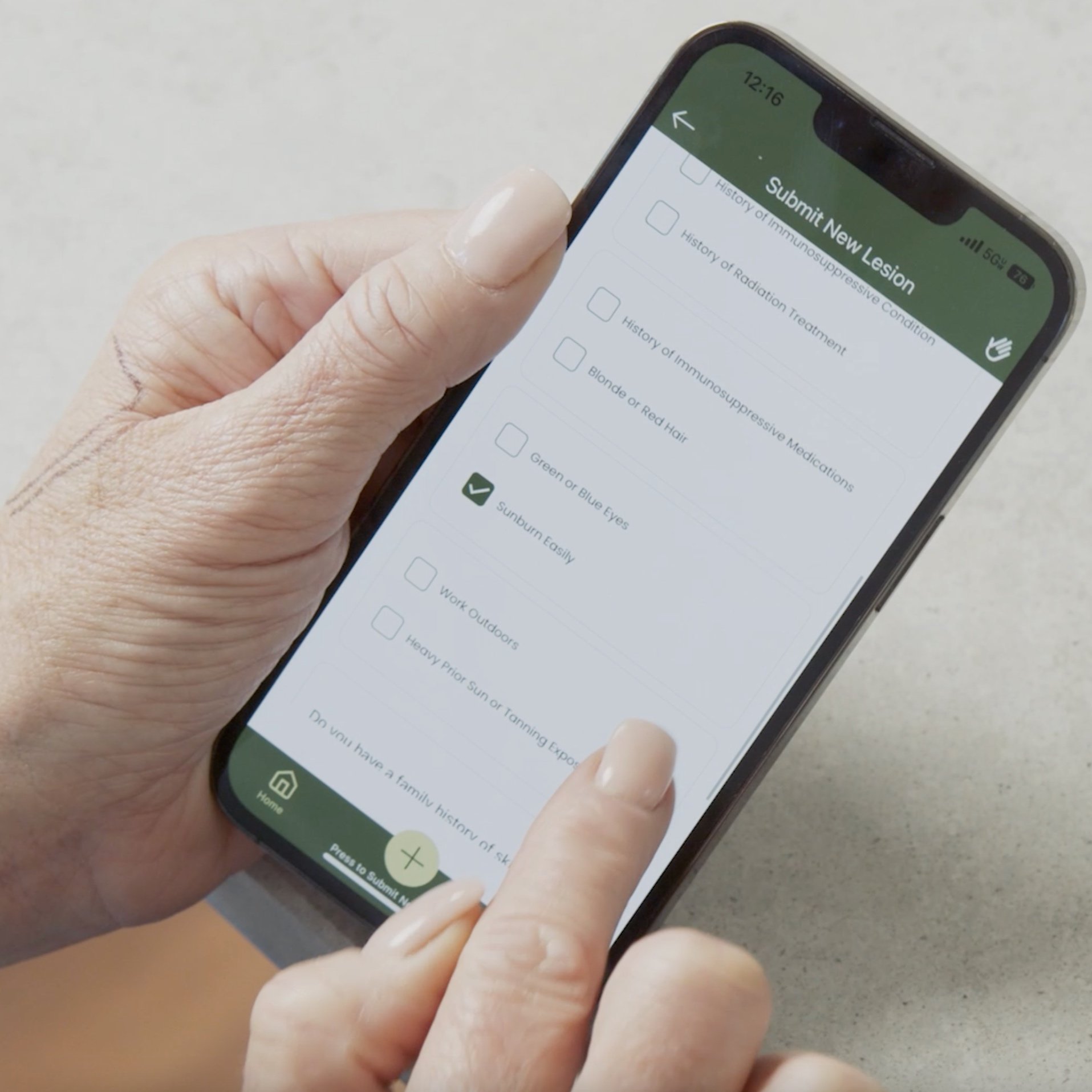Proactive care means
peace-of-mind.
Skin cancer develops in 1 in 5 Americans by the age of 70. Early detection improves outcomes for all types of skin cancer. This is especially true for deadly forms of cancer such as melanoma. When detected early, the 5-year survival rate for melanoma is 99%. Undetected, melanomas can move into lymph nodes or metastasize into distant organs- creating a public health impact in the United States.
Through faster, more accessible triage of potential skin cancer spots, thousands of lives can be saved each year. CheckMySpot exists to put expert opinions in the palm of your hand – making proactive care and peace-of-mind as easy as 1, 2, 3.
Source: Skin Cancer Foundation
Discover the fastest way to evaluate potential skin cancers:
With the CheckMySpot app, you can get a dermatologist's opinion usually within 24 hours. No waiting, no in-person appointment, and no insurance required.
Upload two photos of your lesion, answer a few simple questions about your medical history and your current symptoms, and press submit. Your case is now on its way to a certified CheckMySpot provider for review and you can expect a full disposition report within 48 hours.
An Expert Opinion, Without the Wait
Step 1:
Download the app.
Get the CheckMySpot app for Android or iOS.
Step 2:
Complete your medical profile.
Add some basic medical history using the brief questionnaire. All of your information is kept completely confidential, stored in our HIPAA-compliant server.
Step 3:
Upload a photo.
Follow the simple guide to take and securely upload a photo of your skin lesion. If additional photos are needed, our CheckMySpot team will contact you.
Step 4:
Get an expert opinion.
Your image will be evaluated by a qualified dermatologist screener within 24-48 hours. Skin lesions are triaged based on three possible dispositions:
Green: Lesion appears OK; observation only recommended at this time.
Yellow: Non-urgent in-person evaluation visit recommended; lesion indeterminate.
Red: Urgent in-person evaluation recommended; worrisome for cancer.
What comes next?
A green disposition encourages patient users to continue to monitor the lesion for future changes. If a patient user receives a yellow or red disposition, CheckMySpot will refer the user to either their existing dermatologist or a qualified dermatologist in their area for an expedited appointment.
Get An Expert Opinion Now
-
Board certification indicates a provider has met the highest standard of experience, testing and continued education in their chosen field. CheckMySpot is committed to utilizing providers that meet and exceed the very high standards of board certification. For more information on the value of board certification, visit Value of Board Certification | American Board of Medical Specialties
-
Dermatologists are extensively trained in making diagnoses based on the visual appearance of the skin, including spots. As such, dermatology is a field that uniquely lends itself to the use of photographs. In fact, all board-certified CheckMySpot dermatologists pass a rigorous examination in which they are tested on photographic recognition of diseases including all forms of skin cancer. Your CheckMySpot provider will review your photograph looking for features that characterize benign, non-worrisome spots from those features seen in skin cancer.
Yes, but how does my provider know what my spot might be just by looking?
It is often said that a picture is worth a thousand words. Imagine when you pick up a family member from the airport or bus station. You will drive by dozens of people standing on the curb with their suitcase, but you always recognize and stop right by your loved one. However, if you sent somebody else with only a description of your loved one, they’d pause at people and probably resort to asking them if they were your family members! That is exactly how it is with CheckMySpot providers when they evaluate a spot. They are experienced and have seen thousands of skin lesions. This experience allows them to distinguish subtle features of benign and cancerous skin spots.
Frequently Asked Questions

5-Star Reviews







